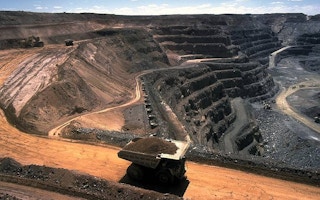It’s considered by the energy market as one of the most authoritative analyses of the global energy business. BP’s annual statistical review of world energy is crammed full of statistics and comments – much of it difficult reading for a company focused on oil and gas production.
In 2016, energy consumption worldwide grew by less than 1 per cent – following on from growth of only 0.9 per cent in 2015 and 1 per cent the previous year.
“The relentless drive to improve efficiency is causing global energy consumption overall to decelerate”, says Bob Dudley, BP’s chief executive.
“And of course the energy mix is shifting towards cleaner, lower carbon fuels, driven by environmental needs and technical advances.”
Low-priced oil
The price of oil – the leading source of global energy, accounting for about a third of overall energy consumption – remains low, averaging US$43 a barrel in 2016 compared with highs of more than $120 a barrel less than 10 years ago.
There continues to be an excess of oil supplies: various production cutbacks by the big oil-producing countries have so far done little to bolster prices. World gas output saw its weakest growth for more than 30 years, says BP. And the mining and burning of coal accounts for about 25 per cent of the climate-changing greenhouse gases being emitted into the atmosphere.
“
The relentless drive to improve efficiency is causing global energy consumption overall to decelerate.
Bob Dudley, chief, BP
BP says that of all the fossil fuels, coal has seen the biggest fall-off in demand. In China – both the world’s biggest producer and consumer of coal – production fell by nearly 8 per cent last year, the biggest drop on record.
President Trump has made the revival of the coal sector one of the key objectives of US energy policy.
BP says the reverse seems to be happening: US coal production fell by 19 per cent in 2016.
“It feels to me like we’re seeing a decisive break with coal, relative to the past”, says Spencer Dale, BP’s chief economist. “I think the big story here is coal getting squeezed.”
The review points to the startling decline in UK coal production and consumption, falling back to levels not seen since the advent of the Industrial Revolution around 200 years ago.
“In contrast, renewable energy globally, led by wind and solar power, grew strongly, helped by continued technological advances”, says BP.
China leads
Renewable energy production – excluding hydroelectric power – grew by 14 per cent in 2016, with wind accounting for about half of total renewable energy growth.
The review says China overtook the US last year to become the world’s largest renewable energy producer.
As the Trump administration seeks to roll back the US renewable energy programme and revive polluting industries such as coal, it’s likely China – along with fast-emerging renewable producers like India – will become ever more dominant in the non-fossil fuel sector.
BP says hydropower production around the world increased by just under 3 per cent last year, while the amount of power produced by nuclear facilities increased by only 1.3 per cent.
This story was published with permission from Climate News Network.










